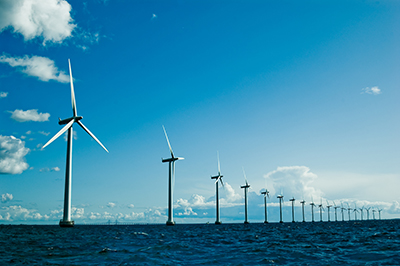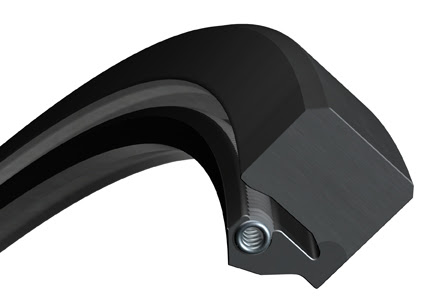SKF will showcase its HSS reinforced, all-rubber seals and present its latest wind energy initiative at Wind Energy 2014 Hamburg, Sept. 23–26, booth B6/374.
HSS Seals
The range of reinforced HSS seals was specially developed by SKF to protect large size bearings that function under tough operating conditions, such as those experienced within wind turbines. Featuring a proven sealing lip design and a new concept of reinforcement, the HSS seals offer high stability. Being all-rubber, the seals can accommodate imperfections in the housing bore.
SKF’s HSS seals are available in the company’s ozone radiation resistant material grade – SKF Duratemp (HNBR). The standard grade of the material is used for the sealing lip, while the part of the seal body that is in contact with the housing bore is made from a harder grade. This provides improved stability in operation and during the installation process. Reinforcing the seals allows for both solid and split designs, which facilitates easy and quick installation and replacement. The smooth outside diameter provides static sealing and no risk of dimensional changes to the seals when exposed to moisture.
“Seals are often perceived as commodity items,” says Maria Conception Martin, SKF global product manager of wind industry seals. “In reality, they are essential system components that help to ensure bearing and system performance, reliability, and efficiency. The ease at which the HSS seals can be exchanged and installed is a major advantage to the wind industry, particularly as working space in the up-tower in the nacelle is usually limited.”
SKF has introduced a flexible manufacturing process for the HSS seals for easily customized seals that effectively match specific shaft and seal housing dimensions without customers experiencing additional costs or extended delivery time.

The WIQS has been designed to help wind turbine manufacturers, as well as wind farm operators, improve turbine efficiency and availability.
Wind Industry Quality Standard (WIQS)
SKF’s WIQS was designed to help wind turbine manufacturers, as well as wind farm operators, improve turbine efficiency and availability. The WIQS is a major step forward in standardizing engineering, manufacturing, and quality assurance processes for wind turbines, sub-systems, and components, says the company.
The WIQS takes an innovative approach, bringing together established practices and standards from a number of different disciplines, including APQP and Engineering Change Management.
“To optimize productivity and profitability, it is essential that turbine output and reliability are maximized,” says Bernd Stephan, director, SKF Renewable Energy Business Unit. “Our wind industry quality standard plays a vital role in helping customers meet these needs by defining specific engineering, manufacturing, and quality processes for bearings and other critical turbine components.
“This will ensure consistency and full traceability throughout the entire value chain, delivering even greater reliability, controlled maintenance, and optimized life cycle cost efficiency,” he continues.
The WIQS defines six key areas: advanced quality planning, engineering change management, traceability, non-destructive testing, cleanliness, and visual appearance. Together, these control component quality at every stage of the production process. In the example of bearings, this starts with the initial steel melt and continues through manufacturing to final sub-surface and surface inspection, packing and delivery. Every step is governed by techniques adapted from the APQP standard, covering factors such as product and process risk analysis, critical production stages, and process validation.
SKF will be implementing the WIQS in phases between 2014 and 2016, in factories that produce wind turbine bearings. The first bearings to be certified to the WIQS will be main shaft and gearbox bearings.
SKF
www.skf.com
Filed Under: Events, News, Policy, Seals & slip rings





